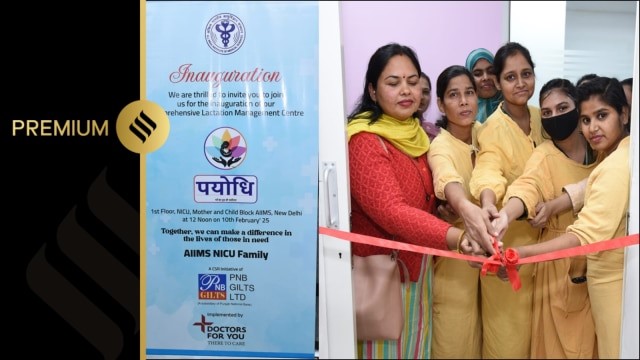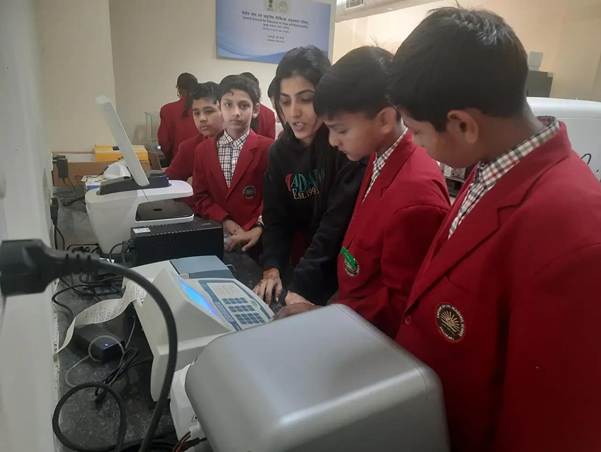IRCTC and IRFC Granted ‘Navratna’ Status
- 07 Mar 2025
In News:
The Indian Railway Catering and Tourism Corporation (IRCTC) and Indian Railway Finance Corporation (IRFC) have been granted Navratna status by the Government of India, becoming the 25th and 26thNavratna CPSEs (Central Public Sector Enterprises) in India. This recognition enhances their operational autonomy and positions them for further growth and expansion.
What is Navratna Status?
Navratna status is a prestigious classification granted by the Department of Public Enterprises (DPE) under the Ministry of Finance to select CPSEs that demonstrate exceptional financial and operational performance. The status provides these enterprises with enhanced autonomy, empowering them to make decisions independently and engage in significant investments without needing government approval.
Eligibility Criteria for Navratna Status:
- Must be a Miniratna-I CPSE with a positive net worth.
- Must secure an Excellent or Very Good MoU rating for three of the last five years.
- Must score 60+ points on key financial indicators, such as net profit, net worth, and manpower cost.
- The board must have at least four independent directors.
Benefits of Navratna Status:
- Investment Autonomy: Ability to invest up to ?1,000 crore or 15% of net worth without government approval.
- Global Expansion: Freedom to form joint ventures, subsidiaries, and alliances globally.
- Increased Market Credibility: Attracts strategic partnerships and enhances business growth.
About IRCTC and IRFC
- Indian Railway Catering and Tourism Corporation (IRCTC):
- Establishment: 1999
- Ministry: Ministry of Railways, Government of India
- Key Functions:
- E-Ticketing: Manages online train reservations through portals and mobile apps.
- Catering Services: Operates onboard catering and manages railway food plazas.
- Tourism Services: Offers rail-based tourism packages, including luxury trains like Maharajas’ Express.
- Rail Neer: Supplies packaged drinking water for railway passengers.
- Indian Railway Finance Corporation (IRFC):
- Establishment: 12 December 1986
- Ministry: Ministry of Railways, Government of India
- Key Functions:
- Funding Indian Railways: Provides low-cost capital for railway expansion and modernization.
- Market Borrowings: Raises funds through bonds, external borrowings, and public offerings.
- Rolling Stock Leasing: Finances the procurement of locomotives, coaches, and wagons.
- Infrastructure Development: Supports the modernization and electrification of railway networks.
Performance of IRCTC and IRFC for FY 2023-24:
- IRCTC:
- Annual Turnover: ?4,270.18 crore
- Profit After Tax (PAT): ?1,111.26 crore
- Net Worth: ?3,229.97 crore
- IRFC:
- Annual Turnover: ?26,644 crore
- Profit After Tax (PAT): ?6,412 crore
- Net Worth: ?49,178 crore
Implications of Navratna Status for IRCTC and IRFC
The grant of Navratna status is a significant milestone for both IRCTC and IRFC, offering them several advantages:
- Operational Autonomy: Both entities can now make larger investments independently, enhancing their capabilities to drive further growth and development.
- Business Expansion: The status will facilitate the ability to enter into joint ventures, partnerships, and alliances, both within India and internationally.
- Enhanced Market Credibility: This recognition will likely attract more investors and strategic partners, boosting the financial health and market standing of IRCTC and IRFC.
Harpoon Missile
- 07 Mar 2025
In News:
The U.S. Air Force is exploring a new approach to naval warfare by integrating the Harpoon anti-ship missile onto its F-16 fighter aircraft. This development signifies a shift in operational capabilities and enhances the U.S. Air Force’s ability to conduct anti-surface warfare.
Overview of the Harpoon Missile:
The Harpoon missile is a subsonic anti-ship cruise missile developed by Boeing for the U.S. Navy, first introduced in 1977. It is designed to strike surface targets, such as ships and land-based structures, and is currently in service with over 30 countries, including India.
Key features:
- Length: 4.5 meters
- Weight: 526 kilograms
- Range: 90 to 240 kilometers
- Speed: Mach 0.85 (approximately 647 mph or 1,041 km/h)
- Guidance System: GPS-assisted inertial navigation and active radar seeker, enabling both anti-ship and land-strike capabilities
- Warhead: 221-kilogram blast warhead
- Launch Platforms: The Harpoon can be launched from various platforms including ships, submarines, aircraft, and shore batteries
- All-Weather Operations: Designed to perform under various environmental conditions, Harpoon can execute both over-the-horizon and sea-skimming maneuvers for high survivability.
U.S. Air Force Integration with F-16 Aircraft:
The integration of the Harpoon missile onto F-16 aircraft represents a strategic shift for the U.S. Air Force, as traditionally, the missile has been used exclusively by naval platforms. The 53rd Test and Evaluation Group demonstrated a new gateway system that allows for rapid integration of the Harpoon with the F-16, significantly enhancing its anti-surface capabilities.
This integration system enables communication between the missile and aircraft without requiring extensive modifications, potentially shortening the deployment timeline for advanced weaponry. The F-16 fighter aircraft, traditionally designed for air-to-air combat, would now also have the capability to engage surface targets, improving the Air Force’s combat readiness and operational versatility.
Implications for Naval Warfare:
The potential for deploying the Harpoon missile from F-16s would mark a shift in the U.S. Air Force’s role in naval warfare. Traditionally, the Air Force has not employed anti-ship missiles, relying instead on the Navy for such capabilities. The integration of Harpoon onto F-16s would diversify the operational roles of the aircraft, adding flexibility to U.S. military strategies and improving overall effectiveness in anti-surface warfare.
This move would also enable the Air Force to act more autonomously in surface combat scenarios, without relying solely on naval assets. The introduction of this capability could prove critical in multi-domain operations, where air, land, and sea forces must be seamlessly integrated to respond to evolving threats.
Future Developments:
The success of integrating the Harpoon missile onto the F-16 could pave the way for future projects involving the integration of other advanced weapon systems across various military platforms. The flexibility to adapt quickly and innovate beyond bureaucratic constraints is crucial in maintaining a strategic advantage and responding effectively to emerging threats.
The U.S. military’s ongoing commitment to technological advancements and interoperability across its branches signals its readiness to maintain supremacy in naval and aerial warfare. The integration of Harpoon onto F-16s is an example of this evolving capability, with potential implications for future military operations worldwide.
Payodhi Milk Bank at AIIMS

- 07 Mar 2025
In News:
Payodhi, a human milk bank and lactation management centre at AIIMS, New Delhi, has emerged as a critical facility for premature and critically ill newborns in the Neonatal Intensive Care Unit (NICU). Launched in September 2024, it provides pasteurised donor breast milk to newborns who require it due to medical conditions or where the mother cannot breastfeed.
Objectives:
- Provide Safe and Processed Human Milk: Ensures critically ill or premature infants receive the essential nutrients they need for survival, brain development, and immune system strengthening.
- Support Lactating Mothers: Provides counselling, milk donation, and storage facilities to lactating mothers, helping them contribute to milk banks if they have excess milk or cannot breastfeed.
- Free-of-Cost Service: The milk bank offers these services free of charge, ensuring equitable access to life-saving nutrition for vulnerable newborns.
- Global Standards: Payodhi follows guidelines set by the World Health Organization (WHO) and the Government of India on infant nutrition.
Significance:
- Lifesaving Nutrition: The use of donor milk reduces mortality risks in preterm babies, helping to prevent conditions like sepsis, necrotising enterocolitis (NEC), and retinopathy—common complications faced by premature infants.
- Prevents Milk Wastage: By utilising excess milk from donor mothers, Payodhi prevents the wastage of breast milk, which could otherwise be discarded.
- Support for Medical Conditions: The milk bank is crucial for infants whose mothers cannot produce sufficient milk due to medical reasons, such as pulmonary hypertension or those undergoing surgery.
Medical and Health Benefits of Donor Milk:
- Sepsis Reduction: Donor breast milk reduces the risk of sepsis by 19%, compared to formula feeding.
- Reduction in NEC: It significantly lowers the risk of necrotising enterocolitis (NEC) by 79%, a severe infection with a high mortality rate in premature infants.
- Improved Health Outcomes: Early initiation of breast milk within an hour of birth can reduce neonatal deaths by 22%. It also reduces feeding intolerance, vomiting, and shortens NICU stays.
Expansion and Reach:
Payodhi is one of around 90 milk banks in India, contributing to the nationwide effort to reduce neonatal deaths. AIIMS is working to expand its donor pool by reaching out to mothers whose babies have undergone surgery or those whose infants are in long-term NICU care. The milk bank also plans to reach out to working mothers, encouraging them to express and donate excess milk, benefiting both the infants and their own health.
Why Donating Milk is Beneficial:
Donating milk not only helps save newborns but also benefits the donor mothers by stimulating lactation and preventing milk suppression. The act of expressing milk helps maintain milk production, which is essential for the health of both the baby and the mother.
‘One Day as a Scientist’ Initiative

- 07 Mar 2025
In News:
In response to Prime Minister Narendra Modi’s call during his Mann Ki Baat address, the Ministry of Ayush has launched the ‘One Day as a Scientist’ initiative. This program offers students an immersive experience in scientific research, providing them hands-on exposure to advanced laboratory equipment and modern research methodologies. The initiative aims to nurture the scientific temperament among young minds and encourage them to explore the integration of traditional medicine with modern science.
Key Features of the Initiative:
- Hands-on Lab Experience: Students visit Ayush research institutions where they explore cutting-edge scientific tools and technologies, gaining firsthand insight into the research process.
- Mentorship by Experts: Scientists and researchers guide students, offering valuable insights into research methodologies and the potential of Ayush systems in mainstream healthcare.
- Integration of Traditional and Modern Sciences: The initiative emphasizes the role of Ayush therapies, including Ayurveda, Yoga, Naturopathy, and Homeopathy, combined with modern scientific advancements.
- Nationwide Participation: The program is implemented across various institutions such as the National Institute of Ayurveda, Central Council for Research in Homoeopathy (CCRH), and the Central Research Institute for Yoga & Naturopathy (CRIYN), facilitating student engagement in scientific exploration.
Objectives of the Initiative:
- Encouraging Youth Participation: By providing direct exposure to scientific research, the initiative aims to inspire students to pursue careers in research and innovation.
- Bridging the Gap Between Traditional and Modern Medicine: The program focuses on scientifically validating and innovating traditional medicine, making it an integral part of India’s healthcare system.
- Fostering a Scientific Temperament: Students gain a deeper understanding of scientific processes, enhancing their curiosity and critical thinking, key traits for future leaders in research and innovation.
Alignment with National Science Day:
The National Science Day 2025 theme, “Empowering Indian Youth for Global Leadership in Science and Innovation for Viksit Bharat,” aligns perfectly with the goals of this initiative. The program aims to inspire students to become future leaders in science and innovation, contributing to India’s vision of becoming a developed nation.
Aadhaar Governance Portal

- 07 Mar 2025
In News:
The government has introduced the Aadhaar Governance Portal, a new initiative developed by the Ministry of Electronics and Information Technology (MeitY). This platform is designed to streamline the approval process for Aadhaar authentication requests and further enhance citizen services.
Key Features:
- Simplified Authentication Process: The portal offers a step-by-step guide to help both government and private entities apply for Aadhaar authentication. It aims to improve the overall delivery of services, reducing administrative delays.
- Seamless Onboarding: Entities can now access detailed Standard Operating Procedures (SOPs) for onboarding Aadhaar authentication services. The portal serves as a comprehensive resource for entities seeking authentication approval.
- Wide Applications Across Sectors: The portal will be used for Aadhaar authentication in multiple sectors, including healthcare, education, e-commerce, and hospitality. It enables citizens to access essential services with ease.
- Face Authentication: The integration of face authentication in customer-facing applications will allow for anytime, anywhere authentication, enhancing the flexibility and accessibility of services.
Impact on Governance:
This initiative comes as part of the government's broader agenda to support good governance through technology and improve the delivery of welfare services. The new rules, introduced under the Aadhaar Authentication for Good Governance (Social Welfare, Innovation, Knowledge) Rules, 2025, aim to enhance service delivery and simplify processes for both citizens and service providers.
Role of Aadhaar:
Aadhaar, a 12-digit unique identification number, serves as proof of identity linked to an individual’s biometric and demographic information. Launched by UIDAI in 2009, Aadhaar has become integral to the delivery of government services and is now widely used by private entities for identification purposes.
With its ability to ensure verified identities, Aadhaar is crucial for streamlining processes in sectors ranging from welfare distribution to digital banking.
